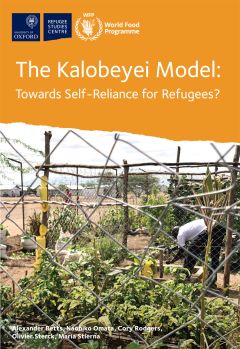The Kalobeyei Model: Towards Self-Reliance for Refugees?
Alexander Betts, Naohiko Omata, Cory Rodgers, Olivier Sterck and Maria Stierna

This report outlines a conceptual model and indicators for measuring refugee self-reliance, and applies it to the Kalobeyei settlement and Kakuma refugee camps context. The Kalobeyei settlement was opened in Turkana County in Kenya in 2016 with the intention of promoting the self-reliance of refugees and the host population and delivering integrated services to both. Its development is now guided by the Kalobeyei Integrated Social and Economic Development Programme (KISEDP), led by the Government of Kenya (GoK), the Turkana County Government, UNHCR, and partners. KISEDP envisions a range of innovative, market-based approaches to refugee protection that diverge from the conventional aid model implemented in Kakuma. These include cash-based programmes to meet housing, nutritional and other material needs, training to capitalise on the skills and entrepreneurial potential of refugees and hosts, and agricultural projects to promote dryland farming and household ‘kitchen gardens’. This report is based upon a 3-year study following newly arrived refugees integrated into the new Kalobeyei settlement and the old Kakuma refugee camp since 2016. The newly arrived refugees were allocated between the two contexts based on their date of arrival. In the study, we follow newly arrived South Sudanese refugee in both Kalobeyei and Kakuma in order to compare outcomes over time, and identify what difference the Kalobeyei settlement makes in comparison to the Kakuma model. We also follow newly arrived Ethiopian and Burundian refugees within Kalobeyei. The report covers two waves of data collection with the same randomly sampled respondent population, carried out in 2017 and 2018.
